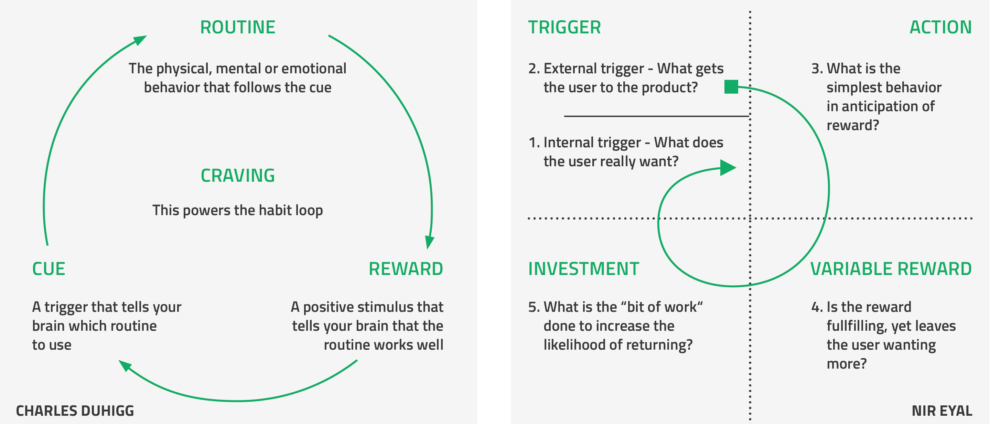Blog
How to build habit-forming news products
Earlier this year we published the results of months of research into the world of habit-formation for news products. Through interviews with leading publishers such as The Telegraph, The New York Times, Schibsted, The Wall Street Journal, and more, as well as our learnings from the latest Digital Growth Summit, we were able to synthesize the key learnings from years of experimentation on habit formation.
Recently we are hearing from publishers who are interested in launching new products to suit the needs of existing and new subscribers in these chaotic times. Here is the advice we give to such publishers, hopefully it is helpful for you as well as you consider new digital products. If you are interested in learning more about habit formation theories and practical applications, read our complete guide to habit formation for news publishers. If you wish to read our full research report, download it for free here.
66 days to form a habit
Researchers from different backgrounds such as psychology, sociology and business have studied the components of habits and how to form and adapt them. Applications of these studies can be seen in medicine, organisational culture, technology and product design. Both Charles Duhigg and Nir Eyal have notable habit models, as seen below, and explained further in the research report.

However another important model comes from Dr. Philippa Lally of University College of London. She studied how long it takes to develop a habit, concluding that 66 days are needed for a habit to form. While there are various schools of thought on exactly how long it takes to form a habit, all agree that it takes time. Often with experimental news products, we see publishers give up too soon. If there are no results right in the beginning, the product can be declared a failure. Yet a habit is only able to be seen on average after more than two months. That means that just before the finish line, publishers are sometimes quitting the race, after already investing in the development and marketing of the new product.
Make readers crave the news
In Charles Duhigg’s habit loop (above), the concept of craving is key. In order to ensure readers truly adopt news into their daily routine, it is important to provide a reward for reacting to the trigger that readers will ultimately crave.
In our own research in cooperation with KU Leuven and Mediahuis, we have been able to define the building blocks of positive effect by surveying and observing how readers consumed digital news content. This also includes the six key reasons why readers come to news products in the first place, and the key rewards they are craving, as seen below. Find out more in the report itself.

In order for people to do the action again and again, the variable reward must be unpredictable. That’s why many publishers chose to reward readers with the news content itself.

Personsalisation is a critical success factor in generating variable reward, which is necessary for a craving to develop (as seen in the example above). This is something we are further exploring this year with our launch partners for JAMES, our personalisation technology.
Habit formation canvas
From our research and discussions with publishers, we have developed a habit formation canvas for news media products, as explored below. This aims to help publishers carefully think through each product and feature that they propose to their audience, in order to succeed in building strong recurring relationships with their readers.
As exciting as it may be for publishers to give new product forms to their journalism, one of the most complex parts is making sure readers will welcome these products into their daily lives.
With our learnings from interviews with leading publishers, we have applied the basics of habit formation to the news media industry through the creation of the Habit Forming Canvas for News Media Products, illustrated below (you can also download a fillable version here).

Through using this canvas to carefully design new products, publishers will be able to clearly understand how their product fits into the habit cycle of their readers.
Don’t forget about organisational transformation
Through our interviews with leading publishers, we found that the most successful organisations made sure the whole company culture became truly habit-focused. Interviewed publishers agreed that broader organisation transformations are crucial to successful habit formation journeys. Before designing for habit-development, news organisations need to first take a look at their own culture.

It is important to get everyone aligned on the ultimate goal, such as increasing reader engagement. To achieve this, many publishers adopt agile processes and focus on a data-driven culture. This is often complex since the newsroom and the product teams have different cycles, speed and rituals. The whole organisation has to commit to the transformation and find the right balance with their digital evolution.
Other Blog Posts

Stay on top of the game
Subscribe to Twipe’s weekly newsletter to receive industry insights, case studies, and event invitations.
"(Required)" indicates required fields

